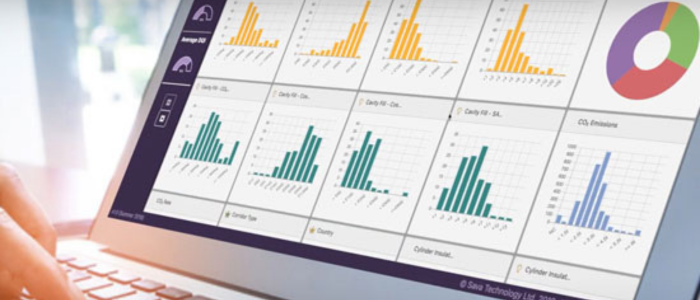Calculate performance
- Calculates carbon and fuel cost outputs
- SAP 10 compliant
- Delivers results even without full RdSAP data
- Fast and secure; hosted on MS Azure servers
Sava Intelligent Energy puts you in control of your property portfolio, helping you to easily understand the performance of your housing stock and potential improvement options.


Build and compare improvement plans to optimise payback. Sava Intelligent Energy will help you set budgets, plan your investments and manage return on investment.
Identify and address homes in need of improvement to ensure you’re providing a safe, healthy and legally compliant living environment for your residents. Learn the best ways to resolve building safety and quality issues and achieve your energy efficiency and zero-carbon goals.

We can help you whatever your position and wherever you are in your carbon goal planning.
Sava Intelligent Energy is already used by over 200 social housing providers across England, Wales and Scotland to manage over 3 million homes.
Without sufficient knowledge of the energy attributes of a housing stock it’s impossible to devise an improvement strategy that will take you cost effectively towards lower carbon and lower running costs. And to be successful in bidding for funding from initiatives such as the Warm Homes: Social Housing Fund, having confidence in the data you hold on your stock is a priority.
Sava Intelligent Energy software integrates with all the major asset management systems usually deployed with a housing provider, ensuring data integrity and a quick set up process. Sava Intelligent Energy can also integrate through an API with bespoke proprietary asset management systems that a housing provider may have developed themselves.
Get in touch with Sava’s relationship management team members Mark Sreeves, Colette Jones, Andy Flook, Dan Garbett and Alys Brown to discuss your needs and how we might help at technology@sava.co.uk.
In November 2020 BEIS issued a consultation where they sought views on how mortgage lenders can help householders to improve the energy performance of their homes.
The Government was suggesting that lenders such as banks and buildings could have a role in building a market for energy performance improvements and the consultation set out a range of proposals that could improve the energy performance of mortgaged properties, and deliver substantial emission reductions. Proposals included the disclosure of energy performance across each lender’s portfolio, through to setting voluntary and mandatory targets for improvement.
Sava’s analytical software models could be used by lenders to analyse their existing portfolios, using our proprietary Minimum Data SAP (MdSAP) where data is incomplete. Sava Intelligent Energy could model costed improvement plans to meet carbon and EPC targets. A public facing interface could be deployed to allow homeowners to interrogate their property, model improvement options and apply for funding.
Contact: Dr Neil Cutland, Consultancy Director technology@sava.co.uk
Improving the energy performance of a housing stock requires a partnership approach between the organisations in the supply chain, from engineering consultancies, sustainability experts, funders, through to main contractors and their subcontractors.
Sava works with all the main players to ensure the client gets the best solution for the best value. In particular, we have a special license of Intelligent Energy that can be used by consultants and contractors to analyse the housing stock of their particular client.
Contact: Andy Flook, Development Director technology@sava.co.uk
Data integrity is critical for those managing a large housing stock. That’s why a unique feature of Sava Intelligent Energy is that it integrates seamlessly with all the major asset management system providers, ensuring the client only maintains a single version of the truth, as well as ensuring that the energy data is automatically updated when routine maintenance is undertaken and recorded in the system (such as gas boiler details).
We want to expand the number of systems that Sava Intelligent Energy integrates with, to ensure that all parties can benefit from access to the data they need to make intelligent decisions.
Contact: Andy Flook, Development Director technology@sava.co.uk
Sava Intelligent Energy integrates seamlessly with all the major asset management systems